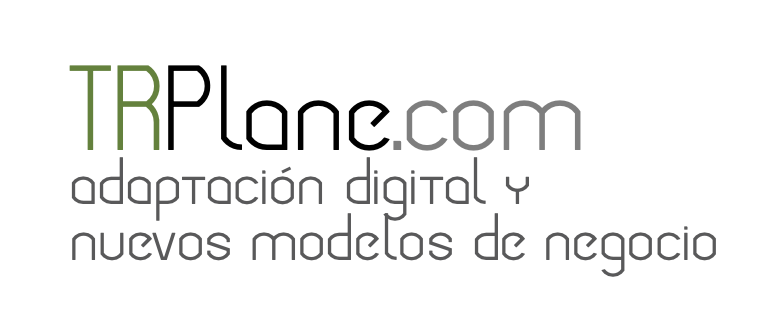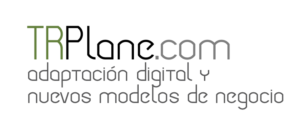OKR is a simple and easy framework that anyone can structure and optimize for their teams. Once you understand what makes good and bad targets, there is no limit to the number of OKR structures you can create.
It is possible to express OKR with affection applications or spreadsheets, but what is important is the process of defining each one of them. Below is the ordered model to carry out this activity.
1.- Establish the Objectives
You start with setting OKR goals by choosing a goal for your organization. As your understanding of how an OKR works and its impact on your business increases, you can start adding more goals.
However, while there is no limit to the number of OKR targets that can be set for the business, Google recommends no more than five.
Remember that you are setting goals to achieve them. When goals become too voluminous in number or ambition, it will be easy to lose sight of too many of them and achieve little end result.
Keep targets within a limit where teams can easily chase and keep track of them. For that reason, for many organizations, five is the limit.
Setting goals for the organization is not enough. The overall goal of the company should be explained to the various teams. The goals you set will guide your team's goals. In turn, the goals of each team must align and work to achieve the goals of the company.
Any objective of an OKR, must have the following characteristics: ambitious, actionable, qualitative and time bound.
2.- Define the Key Results
For each organizational objective, three to five measurable key results should be available. The essence of having clear key results is that they are the measures by which the objective is achieved.
The key results must be configured so that if all of them are met, the objective is automatically fully achieved. Objectives and key results are fed back into the OKRs.
One characteristic that key results must have is that they must be measurable and easy to quantify. Unlike objectives, which are somewhat vague statements, key results are based on results.
Here are some of the most popular ways to set measurable key results.
- Increase (the tangible, for example, sales) from (previous position) to (future position)
- Reduce (the tangible costs, for example) in (the objective)
- Improve (the tangible, for example, customer satisfaction) to (the goal)
Key results measure and track progress towards goal achievement. It is essential to keep in mind that the key results do not stand on their own, but are inspired by the stated objective.
Some more explicit examples of key results.
- Increase detergent sales from 100 boxes per day to 150 boxes per day by March 30.
- Improve customer satisfaction by up to 85%
- Reduce the cost of running the company by 5%
The key results can be based on various metrics, such as performance, engagement, growth, and revenue.
3.- Update the OKRs
After the OKR is established, constant monitoring of the team's progress should be made prior to the achievement deadline. Waiting until the deadline for the OKR to arrive, usually quarterly, before evaluating the process leaves no room for ad hoc adjustments.
Ideally, the OKRs set for the team should be reviewed every week. During the review, some corrections and adjustments may be made to the OKR. This constant evaluation also puts pressure on the team to perform and deliver meaningful results before the next review.
4.- Plan activities
When planning your organization's activities for the week, you need to make sure that OKRs is one of the main weekly review activities. OKR activity should represent time spent focused on company goals. Describing the reflections helps in their evolution and planning.
- What are the best plans and projects that can be done as a company to achieve the objectives?
- Is the company's current plan moving the company toward achieving its goals?
- Why weekly goals are not met?
- What can be done differently to achieve a better result?
When you plan activities, you are better positioned to see distractions to avoid and target efforts to achieve goals.
5.- Review the OKRs
The last step in the life of an OKR is its review. In this stage, how they perform in the organization and the teams is reviewed with an overview of the OKRs.
This review stage occurs at the end of each quarter. It is an opportunity to see what the organization is doing well and what areas can be improved.
At the end of each quarter the team meets, current performance is evaluated and planning begins towards the next OKR goal.
All organizations should conduct an OKR review at least twice a quarter. It is the opportunity to discuss the challenge, share ideas and make recommendations to improve the OKR.
What makes the OKR model unique
There is no standard manual on how to form or use OKRs. The great diversity of individuals, organizations and teams and their different needs makes a set of rigid rules impossible.
Even so, its use is so widespread that the number of companies and industries that use it, adapt and adjust it to their objectives, showing the flexibility of the model and being used as a reference by the rest of the market.
Although there is no single way to use it as discussed, some basic concepts are accepted as unique elements present in all OKR.
1. Dynamic and Agile Goals
An OKR offers a dynamic and agile approach for planning and goal setting. Instead of using a static annual approach, break the process down into shorter cycles in quarters.
Not all companies use the quarterly framework (3 quarterly and 1 yearly), some use even shorter timeframes to review OKRs. With shorter timeframes, organizations set agile goals and track progress more efficiently than with a single annual approach.
2 Simplicity
The OKR model is based on a simple framework that does not involve complex calculations or terms. It is a lightweight process that is fundamentally the simplest framework for goal setting.
They do not involve a steep learning curve to understand how it works. People in the organization can easily understand the objectives and key results contained in the OKR with a minimum of effort.
One big advantage of OKR is that it doesn't take long to set up. Unlike KPIs, which are more complex and can take time to set up, OKR allows you to focus more on achieving your goals than setting them.
3 Transparency
They produce a high level of transparency in the organization. With its easy-to-understand structure, it helps create alignment of people and teams.the.
It is not a hidden document that can be accessed by the manager responsible for the execution. Everyone in the organization has access to the OKR and they can look at them, see where they fit, and play their roles to make it happen.
4. Nested Moves
The complete framework of all OKRs help solve the dilemma of combining strategic and tactical initiatives in an organization. Strategies tend to have long-term implementations, while tactics tend to be short-term. To find a balance between these two divisions, OKR adopts three different classification levels depending on the movements that originate them.
- Strategic move: refers to the highest possible level, the OKRs established for the organization. The length of time is usually one year.
- Movement tactical: with a shorter duration, usually quarterly. They are often OKRs for teams in the organization.
- Movement operational: refers to the follow-up and monitoring of results or key actions that are usually carried out on a weekly basis.
5. Bidirectional Objectives
Goal setting has been based on a top-down waterfall model that consumes valuable time and does not produce the best results.
While goal setting is important, the technique shouldn't take so many hours to develop. Also, the top-down cascading model is a complex challenge from a tracking point of view.
The OKR model is not applied in this way. Allows more room for flexibility. It is a more market-oriented approach, combining the bottom-up approach and the top-down goal-setting approach.
The way in which both approaches are combined lies in their direct levels of applicability. For example, in an organization, there are strategic OKRs that everyone who works there should be aware of (top-down approach).
Then, while following the strategic OKRs, each team also has their tactical OKRs, which they must achieve (bottom-up approach).
For many organizations, strategic OKRs are in the minority for teams, who focus more on tactical OKRs. This view has the distinct advantage that everyone has a clear understanding of the organization's strategy.
OKRs are easier to implement compared to the traditional top-down model.
6. Ambitious goals
It is often the case that people unfamiliar with the model find OKRs too ambitious; they are not very wrong. The philosophy behind setting OKRs is not to make goals easy to achieve. Rather, the goals that are difficult for an organization to achieve at 100% are the ones that should be set.
These types of goals are called extensive goals because they push us to expand our personal capacities and think of solutions beyond the traditional ones. They are bold and ambitious and are best seen as team and personal challenges.
The difference between OKRs and desired goals is that you can achieve a significant portion of them. The ideal recommendation an organization should achieve from their OKRs is 70%. By setting ambitious goals, organizations can expand the capabilities of their workforce to achieve peak performance.
7. Decoupling Rewards
- Termination Rewards
An OKR works best when it's separate from the rewards. internal of the organization. Once aligned to a reward, people will take the safe path and set goals they can easily achieve.
Remove the fear and doubt that people will have in a performance-based system by separating rewards from OKRs.
Organizations need to adopt better reward systems that take into account the impact of employees on the business. OKRs cannot be the only total evaluation value used, but one of them. yesIt is better used as a management tool than as a reward.
Benefits of applying the OKR Model
Looking at the number of large organizations like Google, Netflix, and Adobe that use OKR, the benefits it brings are obvious. Making a summary of the most important would be the following
1.- Focus
It helps to focus on achieving your goals, in the first instance, by reducing the established number. The fewer targets are marked, the more effective the OKR will be. It is advisable not to set more than seven goals at any given time. In turn, it is important to limit the key results to a maximum of five per objective.
Due to these restrictions, there is an obligation to focus on the OKR, in the areas that are important for the growth of the organization.
2.- Alignment
It encourages that the objectives of the company and those of the people align with each other.
A strategic OKR is established at the executive or strategic level in any organization. It forms the basis of the rest of the tactical OKRs necessary to guide the teams and departments of the organization.
You must ensure that the day-to-day activities and goals of all teams run smoothly.
3.- Commitment
After focus and alignment comes commitment. Compliance, schedules, and resources are adjusted to ensure OKRs are achieved.
These commitments are monitored in a transparent manner. Each team member must give very clear signals to everyone that they are working towards their OKRs.
Whether done through a spreadsheet or an OKR software tracking tool, progress should be shared to convey to the organization the state of progress that is likely to affect or motivate others. The most important thing is to show that there is alignment and transparency.
4.- Flexibility
The OKR model is flexible and does not involve traditional long-term planning. Shorter or longer goal cycles can be set depending on the needs of the organization. However, whether short term or as long as a year, your OKR should be reviewed at regular short intervals, preferably weekly.
5.- Achievements beyond expectations
Goals should be set beyond what can be achieved to achieve peak performance. This explains why OKR does not require only a 70% success rate.
OKR benefits the organization and the employees. For the organization, it helps it achieve more from people. At the same time, employees gain personal growth and increase their ability to achieve their OKRs.
Continue with Steps in the Integration of the OKR Model (2 of 3)




